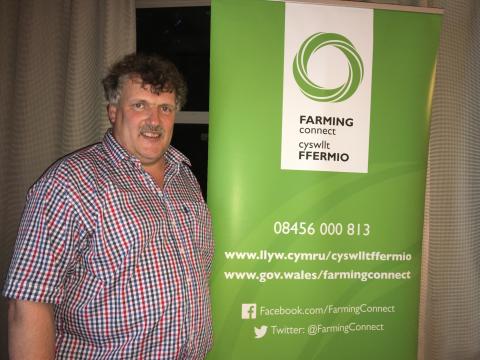Recent events on the subject of gilt management were held in collaboration with Menter Moch Cymru in North and South Wales with Harper Adams University’s Senior Pig Lecturer, Alan Stewart. The events were targeted for pig producers to provide supportive information when rearing replacement gilts for the breeding herd.
The presentation gave information on how to manage replacement gilts from birth up until their first parity. Below are the main points, information and advice from the presentation given.
It is recommended that gilts should be reared within the existing herd where it is possible. Gilt selection should be from those which are genetically superior and structurally sound. Throughout farrowing and prior to weaning it is important that piglets have protection to avoid any injury which may be caused from lay overs. With this in mind, farrowing pen design should be high priority to avoid injury to piglets at an early stage.
Throughout the weaning and grower stage is it possible for replacement gilts to remain with other pigs within the system and to be managed no differently. It is when replacement gilts get to about 80-90kg or before they reach puberty that they should be separated from boars and other pigs in the system. However it’s important to ensure that when gilts are split they remain within familiar or family groups and are not mixed. From this point on gilts and sows will only ever be mixed at weaning. Over supply of gilts may be necessary to allow for a greater selection and additional replacements if required.
At this stage, the main focus is to bring gilts to begin their oestrus cycle. To encourage this, it is recommended that a boar is introduced to the group through only nose to nose contact (ensure that a gate or barrier is between them) for periods of no longer than ten minutes a day.
This short period should maintain the interest of the gilts while introducing them to the progesterone produced from the boar. It is crucial not to have continuous boar contact for gilts as this may affect the boar’s libido and the gilts may get too familiar with the boar and therefore are not attracted to them when they are required to be mated.
If it’s not possible for gilts to achieve any nose to nose contact with a live boar, Boarmate can be used which replicates the odours of a boar. Boarmate should be sprayed towards the nostrils of the gilt/sow. Boarmate can also aid detection of heats and identifying when the gilt/sow is ready to be served.
It is expected that gilts should begin cycling at 90-120kg, however this will be affected by differences throughout breeds. Once all gilts are cycling they can be synchronised with Regumate. Regumate is an oral solution which is administered to pigs to achieve synchronisation of oestrus and improvement of litter size in sexually mature gilts.
Once Regumate is being used there is no boar contact. The aim is for gilts to be mated on their third oestrus cycle but size and age of gilts should be determined. The size and age of the gilt at service can affect their lifetime performance as well as determining the size of their first litter with consideration to their uterine capacity. However important both age and size are it is the age which holds most significance.
It is recommended that gilts should be no younger than 240 days when served with the aim to farrow on their first birthday.
Timing of serving gilts should be considered. The best time for insemination is 12 hours after ovulation. However, it can be difficult to identify when the gilt is on standing heat. You should persevere with gilts to ensure that the oxytocin in the body has had enough time to show a standing heat. When applying pressure on the gilts’ back, if at first they do not stand it is recommended to return and test again after 30 minutes, this will give time for the oxytocin to release hormones in the body which allow the gilt to show standing heat.
Always supervise live matings and ensure that the gilt and boar are not left unsupervised for any periods of time. The boar mustn’t be too large for risk of causing injury to the gilt. The boar should also be experienced and well-practiced to get the job done effectively. This should reduce the risk of injury to the gilt and the boar.
All recommendations in management suggested by Alan were backed up from performance figures from Harper Adams University’s own pig unit consisting of a 230 sow, farrow to finish fully slatted system which batch farrows 32 litters every 3 weeks. In 2016 Harper Adams University achieved a conception rate for gilts of 100% proving that their management decisions are complimenting the unit.

